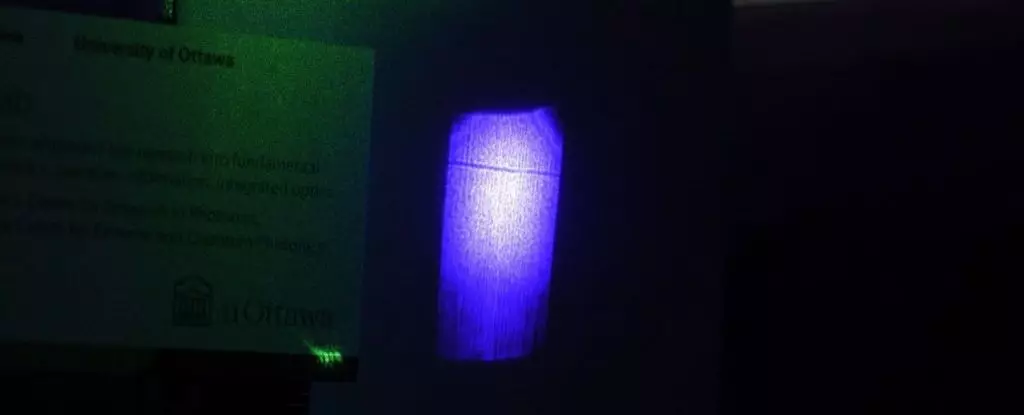The interplay between light and matter is one of the most fascinating subjects in physics, often leading to unexpected discoveries that challenge our conventional understanding. A new optical phenomenon has emerged, igniting scientific curiosity and prompting a reevaluation of our perceptions of shadows. Traditionally, we regard shadows as the absence of light caused by an object’s interference in the path of photons. However, recent findings indicate that under specific conditions, a laser beam can create a shadow that seems to defy the laws of optics. This breakthrough not only deepens our understanding of light-matter interactions but also invites us to look at shadows from a completely different perspective.
Shadows are an everyday experience; they occur when an obstacle blocks light from reaching a surface. This simple yet profound occurrence occurs everywhere in an illuminated environment. However, the realities of quantum mechanics complicate this picture. Typically, photons—the fundamental particles of light—pass through each other without interaction. Two beams of light crossing paths can be likened to two vehicles crossing at an intersection without colliding. The accepted view has held until now that shadows can only be created through physical blockage by an opaque object. But what happens when the rules governing light influx are altered?
Physicists at Brookhaven National Laboratory stumbled upon astonishing results while exploring non-linear optical responses in materials. These non-linear optics deal with phenomena where the interaction between light and material does not adhere to proportional rules. They hypothesized that with suitable experimental conditions, laser beams could produce effects reminiscent of shadows. Researchers, led by physicist Raphael Abrahão, found themselves captivated by the concept during a lunchtime discussion, which stemmed from their examination of light behavior in non-linear materials.
The team’s quest led them to utilize ruby—a prime candidate in the study of non-linear optics—as their experimental medium. By directing a blue laser through the ruby and introducing a green laser perpendicularly, they began observing an unusual occurrence. The interaction of the two light beams within the ruby engaged its electrons in an intricate dance, ultimately obstructing part of the blue light’s path. The result? A distinctly visible dark line on a surface opposite of the ruby, effectively serving as a shadow cast by the green laser beam.
This discovery raises compelling questions about the nature of light and our understanding of optics. The phenomenon observed is remarkable, given that the dark line fulfills all requirements for classification as a shadow. It is prominent enough to be seen with the naked eye, adapts to the mechanics of the surface it falls upon, and shifts in direct relation to the movement of the laser source. Such findings revolutionize our ideas regarding what constitutes a shadow in optics, underlining that the interaction between light and material can be more complex than previously believed.
Abrahão articulates the breadth of their observation’s implications, stating that it broadens our comprehension of light-matter interactions and lays the groundwork for innovative applications of light that have yet to be fully explored. The concept that light could create conditions leading to a shadow parallels various phenomena in nature, but it also signifies a profound shift in the physicists’ approach to exploring optical phenomena.
This groundbreaking discovery not only paves the way for a new understanding of shadows but also opens avenues for advancements in technology. Non-linear optics is already instrumental in developing advanced lasers, communications systems, and imaging technologies. A deeper understanding of how light interacts with materials can lead to further innovations, specifically in areas requiring precision and control over light behavior. As research continues, it will be crucial to explore the potential for practical applications and how these could impact various fields, from telecommunications to medical imaging.
The research led by Abrahão and his team is a testament to the ongoing evolution of our understanding of light and its profound implications. By challenging our preconceptions about shadows and light interactions, they have illustrated how curiosity and inquiry can yield unexpected insights, driving science forward into uncharted territories.

Leave a Reply